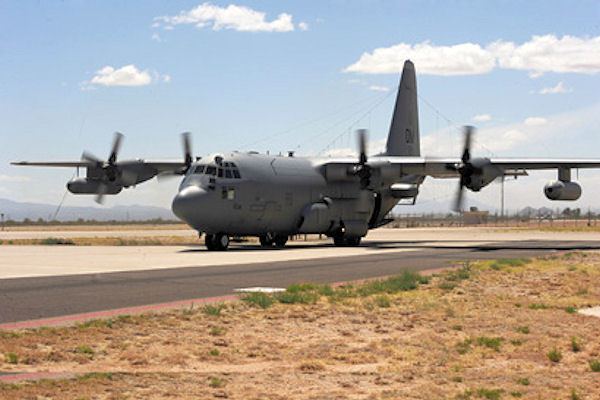Country United States Nickname(s) Bats | Garrison/HQ Davis-Monthan AFB | |
 | ||
Active 1917-1919; 1935-1936; 1940-1946; 1954-1959; 1986-1991; 1992--present Branch United States Air Force | ||
The 43d Electronic Combat Squadron (43 ECS) is a United States Air Force unit. Its current assignment is with the 55th Electronic Combat Group, being stationed as a tenant unit at Davis-Monthan Air Force Base, Arizona as a geographically separated unit from its parent, the 55th Wing at Offutt Air Force Base, Nebraska.
Contents
The squadron is one of the oldest in the United States Air Force, its origins dating to 17 August 1917, when it was organized at Kelly Field, Texas. It later served in France as part of the American Expeditionary Force during World War I. The squadron saw combat during World War II, and became part of Tactical Air Command during the Cold War.
Overview
Along with the 41st ECS, the unit accomplishes the Compass Call mission, providing vital capabilities in the realm of electronic warfare for the Air Force and are poised for immediate deployment to specific theater contingencies. The unit’s combat mission is to support tactical air, ground and naval operations by confusing the enemy’s defenses and disrupting its command and control capabilities.
The squadron flies the EC-130H aircraft, a specially configured version of the Air Force’s proven C-130 transport. To execute its unique missions, the aircraft were modified with electronic countermeasures systems, specialized jamming equipment, the capability to aerial refuel, as well as upgraded engines and avionics. Modifications made to the aircraft vary between the two squadrons, to help each squadron meet its specific mission-oriented needs.
History
The 43rd ECS has a long and varied history beginning Aug. 17, 1917, as the 86th Aero Squadron. It served as part of the zone of advance in France during the latter part of World War I. Then in 1935, it was an observation squadron operating as part of the Air Corps Tactical School at Maxwell Field, Alabama. Beginning Dec. 7, 1941, the squadron conducted patrols over the Hawaiian islands.
The squadron then switched yet again. As a combat mapping squadron, the unit's aircrews flew over Japanese held islands photographing and mapping the terrain and enemy positions. The 86th prepared the way for the taking of the Marshall Islands, Wake, Saipan. Guam, and Iwo Jima. Finally, in 1944, the squadron made the first photographic mosaics of Tokyo. The squadron was redesigned as the 43rd Reconnaissance Squadron (Long Range Photographic) in 1945 then was inactivated in 1946.
In January 1954, the 43rd was again activated, this time at Shaw Air Force Base, South Carolina. The squadron was initially equipped with the Martin RB-57 Canberra. However, once the Air Force received enough Douglas RB-66B Destroyer to equip more than a single squadron, the squadron transitioned to the Destroyer. It accomplished a night photographic mission. The unit was inactivated in 1959.
Redesigned, the 43rd Electronic Combat Squadron, the unit was activated June 6, 1986, at Sembach Air Base, Germany. It served in Europe until 1991, then came to Davis-Monthan AFB and the 355th, May 1, 1992, as the sister squadron to the 41st. The 43rd earned a combat streamer for its duties in World War I and six more for missions flown in the Pacific during World War II.
Lineage
86th Aero Squadron
43d Electronic Combat Squadron
